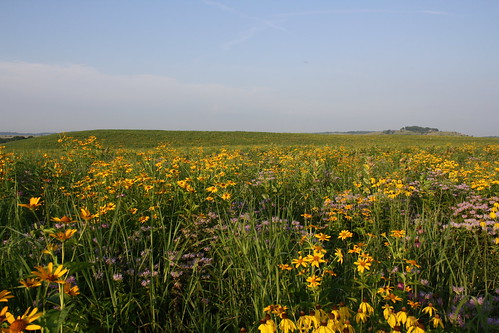
Yesterday, Agriculture Secretary Tom Vilsack and Natural Resources Conservation Chief Jason Weller announced 33 Conservation Innovation Grants awarded to entities across the nation to develop and demonstrate cutting-edge ideas to accelerate private lands conservation.
As the chief said during a media call with the secretary, “The Conservation Innovation Grant program brings together the strength and innovation of the private and non-profit sectors, academia, producers and others to develop and test cutting-edge conservation tools and technologies and work side-by-side with producers to demonstrate how solutions work on the land."
The program is having significant effects. For example, with USDA support, a reclaimed surface mine is now home to cheetahs, giraffes, bison and other wild denizens while serving as a demonstration site for how to convert marginal lands into a robust prairie ecosystem.

The Wilds’ 60-acre demonstration project, created through a Conservation Innovation Grant from USDA’s Natural Resources Conservation Service, shows how a combination of warm-and cool-season grasses can be successfully incorporated into a productive, sustainable rotational grazing system.
NRCS awards these competitive grants for projects that develop and demonstrate innovative technologies and approaches to natural resources issues. The Wilds received funding from NRCS in 2011 to show how an innovative combination of grasses can provide drought tolerant forage for livestock and habitat for wildlife including grassland birds, pollinators and small mammals, and improve soil and produce biomass for hay or biofuels.
Covering 14 square miles, The Wilds is one of the world’s largest wildlife conservation centers and is a popular tourist attraction and education center in southeastern Ohio, with more than 100,000 visitors last year.
Now in its third year, the CIG project is showing great progress. All 19 species of grasses are thriving, including big blue stem grass, Indian grass, switchgrass and eastern gamma grass. These grasses were selected for their adaptability to marginal soils, their suitability for livestock grazing, and their ability to rebuild soils through extensive root systems.
Because of the CIG grant, the land is continually improving and provides a model for how the special selection of plants can help prairie ecosystems thrive.
To view a complete list of the awards announced by the Secretary and Chief Weller click here. To hear the announcement by the Secretary and the Chief click here.
Follow NRCS on Twitter.
Check out other conservation-related stories on the USDA blog.
